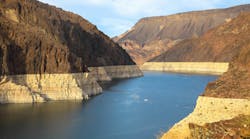An article in the February 4 Wall Street Journal prompted a great deal of reaction and soul-searching around the Web. Adapted by David Owen from his book The Conundrum: How Scientific Innovation, Increased Efficiency, and Good Intentions Can Make Our Energy and Climate Problems Worse, the article questioned whether we’re justified in feeling as good as we do about the things we’re doing “right” for the environment, such as buying more-efficient vehicles or appliances.
As Owen points out, the problem in its simplest form is this: It doesn’t help to buy energy-efficient light bulbs if you then forget to turn out the lights. Worse, if you think you no longer need to worry about turning out the lights because you’ve got such efficient bulbs, your overall energy consumption goes up—but you might still feel a bit self-righteous for purchasing those bulbs in the first place.
The same logic, Owen says, applies to air travel (sure, it takes less fuel per person to travel around the world than it did decades ago—but since it’s cheaper and more convenient, each of us flies more often); to automobiles (what Owen calls “the Prius Fallacy”); to water use (a more efficient water heater but a longer shower, anyone?); and to food consumption (he offers the wonderful anecdote of his locavore neighbor who raises her own chickens—saving the energy that would be needed to transport the eggs to the grocery store and then home—but who also “drives individual hens to the veterinarian, giving her breakfasts an impressively huge carbon footprint”).
So how can we avoid becoming complacent and judge what impact—good or bad—we’re actually having on the environment? In the stormwater arena, more research is being done on the effectiveness and the costs of the many stormwater measures that we as individuals can undertake on our own, such as planting rain gardens or using rain barrels, as well as on widespread use of low-impact-development measures used throughout a watershed. The true effects of these green infrastructure measures have been notoriously difficult to quantify, often depending on more variables—such as soil type, evapotranspiration rates, and the maintenance of individual LID installations—than do those of traditional grey infrastructure; some have questioned whether we’re congratulating ourselves for going green while actually achieving less than we think we are. If we’re going to rely on such measures for improving water quality and for reducing flooding and combined sewer overflows—and justifiably feel that we’re pursuing the right kind of “green”—this research is essential.
Recent Stormwater articles along this line include “Economical CSO Management“ (May 2011), “Runoff Modeling for Rain Gardens” (July/August 2011), and “Urban Floodplain Management” (September 2011). If you can suggest, or provide links to, additional sources, please pass them along to [email protected].About the Author
Janice Kaspersen
Janice Kaspersen is the former editor of Erosion Control and Stormwater magazines.



